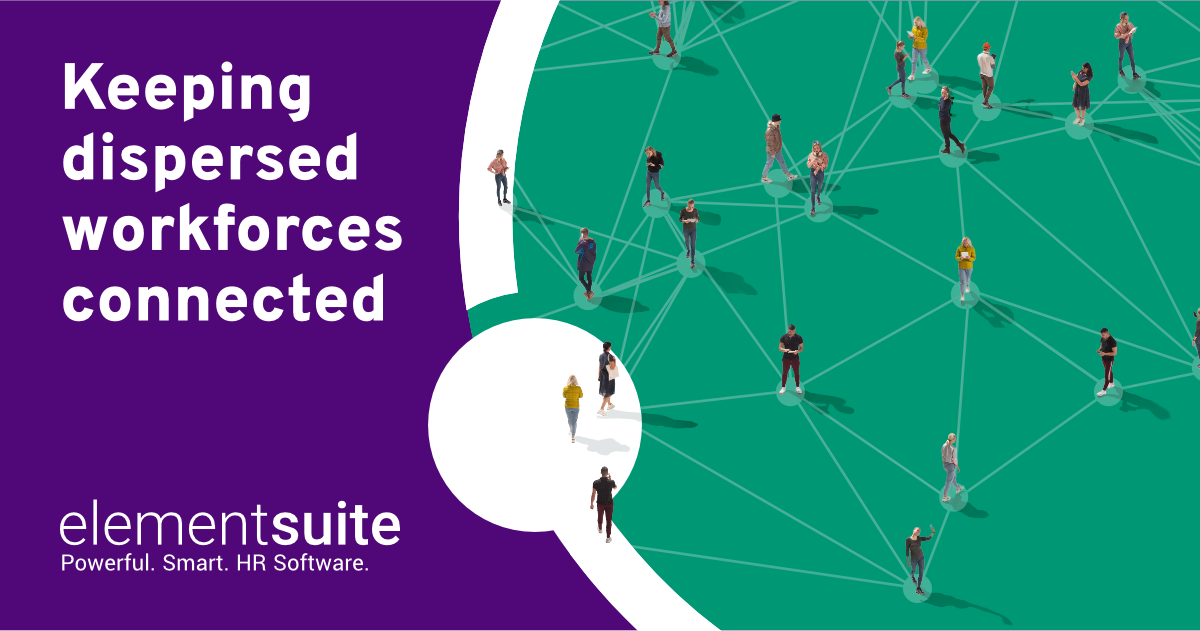When we think about dispersed workforces, we often think about remote or virtual teams working from different locations. Yes, this is correct, especially in the modern world where technology has enabled us to work from anywhere. However, dispersed workforces also include teams that work on different shifts, in different departments or even in different buildings within the same organisation.
Take facilities management, for instance, where teams are responsible for maintaining multiple sites such as office buildings, shopping centres, and industrial complexes. How can these organisations keep their dispersed workforces connected and working efficiently?
Bridge the communication gap
With team members working in different locations or shifts, it can be difficult to ensure that everyone is on the same page and has access to the information they need. In-person or virtual video briefings are often impractical. Additionally, as these workers are constantly on the go, checking emails isn’t exactly their main priority.
But communication is something that should not be overlooked. Especially when research suggests that poor communication in the workplace accounts for a loss of 7.47 hours per employee per week. If we base this on the Real Living Wage of £12.60, this amounts to a loss of £376.49 a month and a loss of £4,517.86 a year.
For what? Simply because proper communication channels were not in place to keep everyone informed and connected?
To bridge this communication gap, organisations with a dispersed workforce can implement a centralised communication system. This could be in the form of a mobile app that allows employees to receive updates to company-wide policies and news, access important documents, and even be part of engagement initiatives such as pulse and employee engagement surveys.
See, there is one thing that every working adult in the UK holds—a mobile phone. So take advantage of the technology that everyone has at their disposal and use it as a tool to keep your dispersed workforce connected.

Flexible working for frontline workers
Frontline workers want more flexibility in their work schedules. While some may not be able to work remotely due to the nature of their jobs, they still value flexibility in terms of their hours and location.
Simply giving them access to schedules weeks in advance, offering them the opportunity to swap shifts with their colleagues and providing them with the flexibility to take time off when needed can improve employee satisfaction and retention.
We must remember that these workers have lives outside of their jobs, too. So, take into consideration their availability and work preferences when creating schedules.
Okay, this might sound like a logistical nightmare when scheduling over 100 employees. But, with technology that allows employees to set their availability and preferences, scheduling can be automated, taking into account employee preferences and ensuring that all shifts are covered.
You can save schedule templates for future use, making the process smoother and less time-consuming each time. Plus, with technology doing all the hard work for you, you can rest assured that you have the right people with the right skills in the right place at the right time. All while accounting for their need for flexibility and work-life balance.
Make onboarding easier for dispersed workers
Onboarding new employees is a crucial process for any organisation, but it can be especially challenging for organisations with dispersed workforces. It’s often rushed, neglected, and not tailored to the needs of these workers. This can result in new employees feeling disconnected from their team and organisation, leading to a lack of engagement, productivity, and, of course, retention.
There are many contributing factors, such as lack of flexibility, communication, and support. However, a large part of this lack of engagement and retention can be attributed to the onboarding process.
The onboarding process for any employee is the first real experience post the interview process, demonstrating what the organisation they are working for is really like. The quality of the experience counts.
The solution? Make onboarding more accessible and user-friendly for remote and frontline workers. Use technology to engage employees as soon as they accept the position. Give them access to your HR software to allow them to view company policies, start their training, update their availability and preferences, and scroll through the internal news feeds.
You want to make them feel part of your team before they even step into the workplace. You want to set the bar high for their experience going forward. You want them to feel connected, engaged and valued from the start.
That all starts with a seamless, technology-driven onboarding process.
Hear what cleaning company, Nviro has to say about elementsuite
Recognising and developing dispersed workers
According to Deloitte, there is a strong link between recognition and enhanced employee engagement, which subsequently boosts job performance. More notably, organisations with recognition programs in place experience a 14% increase in employee engagement, productivity, and performance compared to those without.
In a traditional office setting, it’s easy to recognise and reward employees for their hard work and dedication. You can do it publicly or privately, whether a shout-out across the office or while getting a coffee in the break room. But what about dispersed workers who may not have the same opportunities for face-to-face recognition?
Don’t they deserve the same recognition and rewards for their hard work and dedication?
While it may not be possible to do it in person, technology can bridge the gap and ensure dispersed workers are recognised and rewarded for their contributions. Look for an HR platform that allows for 360 feedback and peer recognition rewards. Post a shout-out on your internal news feed, tagging the nominated employee and outlining their accomplishments.
Just because they may not be physically present in the office doesn’t mean they should miss out on recognition. Neither should they lose out on development opportunities.
Unfortunately, though, despite 70% of frontline workers wanting to be promoted within the organisation, only 4% actually make the leap to corporate positions. It doesn’t really scream out inclusivity, does it?
Not when you aren’t fairly tracking, recognising and developing the talents of your frontline workers.
This can all change with technology. Utilise your HR platform to identify top performers, track their progress and offer them personalised career paths that align with their skills and career goals. Give them a fair chance to progress within the company and show them their hard work and dedication are appreciated and rewarded.
Meeting the digital expectations of Gen Z & Gen A workers
Keeping everything mobile first is also important to meet the expectations of Gen Z and Gen A workers. These generations have grown up in a world where technology is constantly at their fingertips, and they are accustomed to having instant access to information.
Gen Z’ers and Gen Alpha’s are the future. But they are also digital natives, and as such, they expect their work to reflect this.
No matter what their role is, whether they are deskless, blue-collar or white-collar workers, Gen Z and Alpha want to work for companies that utilise the latest technology and have a modern approach to work. They need to be connected to technology. If not, they will find a job that does accommodate these needs.
Therefore, organisations with dispersed workers must adapt and provide digital tools and platforms that meet the expectations of this tech-savvy generation.
This goes beyond providing a mobile application that allows them to view the internal communications channel, their career map, and weekly rotas. These generations are actively using technologies such as AI in their lives.
They use Generative AI to complete coursework, fill in job applications, and even help them shop for their ideal products. They expect the same from their work, and organisations must be prepared.
So, instead of searching through a mobile application for a company policy on annual leave, all they have to do is ask ELLA, their digital HR AI assistant, for the information and have it provided to them instantly.
Or if they want to understand what else they need to achieve to meet the requirements for a promotion, they can ask ELLA, get an instant response and see their personalised career path.
The younger generations expect a seamless digital HR experience, and it’s up to organisations to meet these expectations and stay ahead of the curve.
Discover how a hotel cleaner can leverage ELLA to simplify their workday
Make data your engine
Every single point mentioned above is a data point. A data point that you can utilise to understand your employees better.
Who are your most engaged employees? What motivates them? Who has the potential to move up the career ladder within the organisation? Who is at risk of burning out due to a lack of work-life balance?
Data is one of the most powerful tools that an organisation can have, and it’s essential to collect and analyse data on your dispersed workforce. However, the insights you retrieve will only be as strong as the strength of connection between your HR systems.
Ideally, you will have an all-in-one HR system that will allow you to track every data point and create a complete picture of your dispersed workforce. If you have singular platforms for performance, engagement, recognition, etc., then your core HR system should have the ability to integrate all platforms into one consolidated dashboard.
Only then can you take a holistic view of your dispersed workers and make informed, data-driven decisions that will benefit the organisation as a whole.
In conclusion, by utilising technology in these areas, you can create an inclusive workplace for your dispersed workers that prioritises their needs and supports them to reach their full potential. The key is to use technology to connect with your deskless, disparate teams and create a consistent and meaningful employee experience, no matter where your employees are located.
Where there is technology, there is potential for a more engaged, productive and retained workforce.
Book a demo today to see how elementsuite can transform your organisation and create a more inclusive and connected workplace for all employees.




